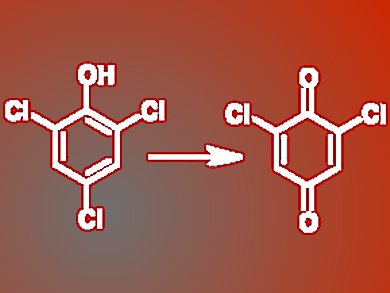Polychlorinated phenols (CPs) were widely used as wood preservatives and are produced involuntarily. Due to their widespread use and persistence, CPs are ubiquitous in soil and aqueous environments. To reduce their toxicity, they can be dechlorinated in the environment, e.g., by many species of the white rot basidiomycetous fungi. The degradation pathway involves peroxidase and oxidase enzymes that are excreted by the fungi in order to degrade lignin. Thereby, they also oxidatively dechlorinate CPs in the para position. This leads to a less toxic para benzoquinone.
Christoph Aeppli, Stockholm University, Sweden, and colleagues evaluated the potential of chlorine and carbon compound-specific isotope analysis (CSIA) to assess the degradation of CP at contaminated field sites. In a laboratory system, they measured isotopic fractionation during oxidative 2,4,6-trichlorophenol dechlorination by representative soil enzymes like C. fumago chloroperoxidase, horseradish peroxidase, and laccase from T. versicolor. These results were then applied to contaminated sawmill sites.
This is the first study that makes use of two-element CSIA to study sources and transformation of CPs in the environment. And contrary to traditional studies, nonpolar groundwater pollutants instead of polar soil contaminates which are more difficult to isolate and analyze were used.
The laboratory results suggest that 2D CSIA allows for differentiating oxidative from reductive CP transformation pathways which is useful, since CPs can potentially percolate from (oxic) soil into (anoxic) groundwater.
- Use of Cl and C Isotopic Fractionation to Identify Degradation and Sources of Polychlorinated Phenols: Mechanistic Study and Field Application,
Christoph Aeppli, Mats Tysklind, Henry Holmstrand, Örjan Gustafsson,
Environ. Sci. Technol. 2013.
DOI: 10.1021/es303343u



